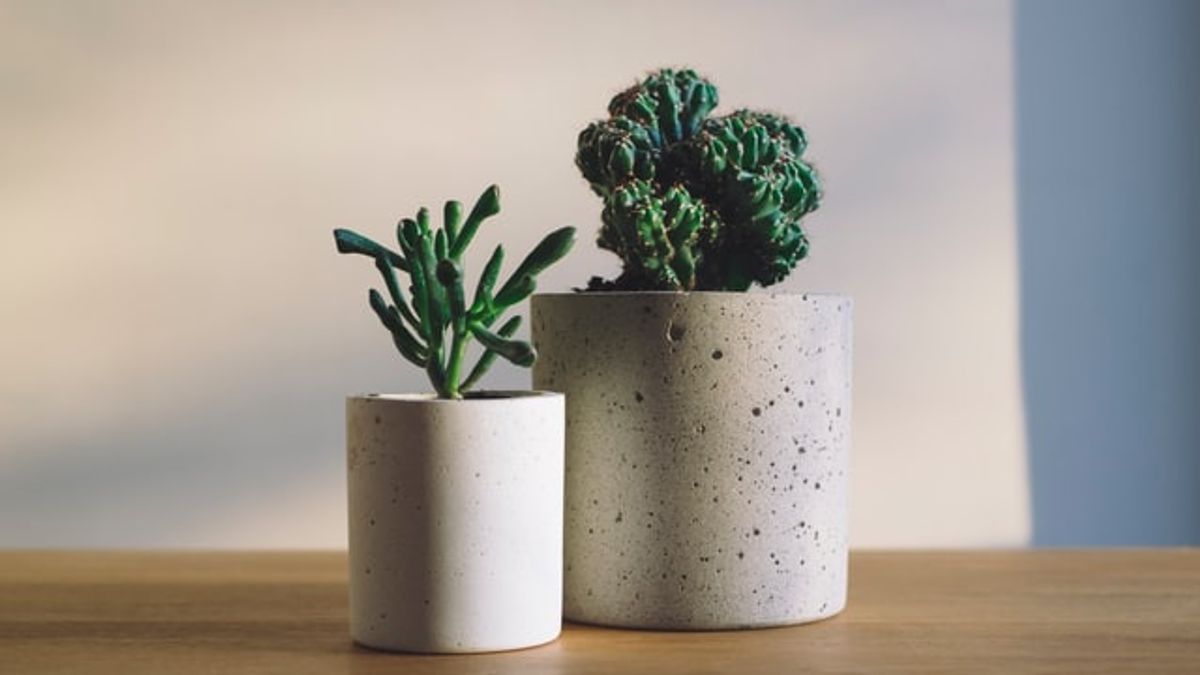JAKARTA - For those of you who suffer from respiratory disorders, the desire to get more oxygen can be a demand. While there are options available for increasing oxygen through means such as oxygenators and air purifiers, there are a variety of natural alternatives for improving air quality that are beneficial for both body and mind. Launching the Lung Health Institute, Thursday, March 10, home can be a source of good health and well-being. With health in mind, VOI has compiled a list of the five best plants that can increase indoor oxygen.
Areca PalmLike other plants, Palm Pinang has the ability to absorb carbon dioxide and release oxygen. However, what distinguishes Palm Pinang from other ornamental plants is its ability to purify the air by removing harmful chemicals such as formaldehyde, xylene, and toluene. Areca palms can be placed where there is enough light and need frequent watering. The best place to put Palm Pinang is the living room.
In-law's Tongue Considered very efficient in oxygen production, the Snake Plant, otherwise known as Mother-in-law's Tongue, has a unique feature where oxygen is produced at night and its ability to purify the air from harmful substances such as benzene, formaldehyde, trichloroethylene, xylene and toluene.
Considered very efficient in oxygen production, the Snake Plant, otherwise known as Mother-in-law's Tongue, has a unique feature where oxygen is produced at night and its ability to purify the air from harmful substances such as benzene, formaldehyde, trichloroethylene, xylene and toluene.
Mother-in-law's tongue can grow well in a well-lit room and needs watering every week. In an air-enclosed room, this plant is able to produce enough oxygen to breathe normally. You can place your mother-in-law's tongue in the bedroom.
Money Plant or Photos Money Plant is renowned for its ability to remove chemicals and other pollutants from the air, particularly benzene, formaldehyde, xylene and toluene. However, despite its air-purifying benefits, this plant is toxic to cats, dogs, and young children if the leaves are ingested.
Money Plant is renowned for its ability to remove chemicals and other pollutants from the air, particularly benzene, formaldehyde, xylene and toluene. However, despite its air-purifying benefits, this plant is toxic to cats, dogs, and young children if the leaves are ingested.
This plant is less light-loving but needs watering every week or so. Can be placed in any room but keep out of reach of pets or small children.
Gerbera DaisySo one of the prettiest houseplants, Gerbera Daisy is often used as a decorative element in gardening. However, Gerbera Daisy also has the ability to produce high levels of oxygen at night while removing harmful chemicals, such as benzene and trichlorethylene. Beneficial for those who suffer from sleep apnea and respiratory disorders, place this plant on the nightstand so that you can have a better quality of sleep. Gerbera Daisy prefers sunlight. You need to water it regularly and keep the soil moist.
Chinese firFir Sinensis is one of the most common indoor houseplants. This plant emits a high oxygen content while purifying indoor air from harmful chemicals such as benzene, formaldehyde, and other toxins. As the name suggests, it is quite popular in China especially because of its high efficiency in removing harmful pollutants from the air. Chinese Evergreen grows well in the shade and only needs occasional watering with a focus on keeping the soil moist.
The English, Chinese, Japanese, Arabic, and French versions are automatically generated by the AI. So there may still be inaccuracies in translating, please always see Indonesian as our main language. (system supported by DigitalSiber.id)








